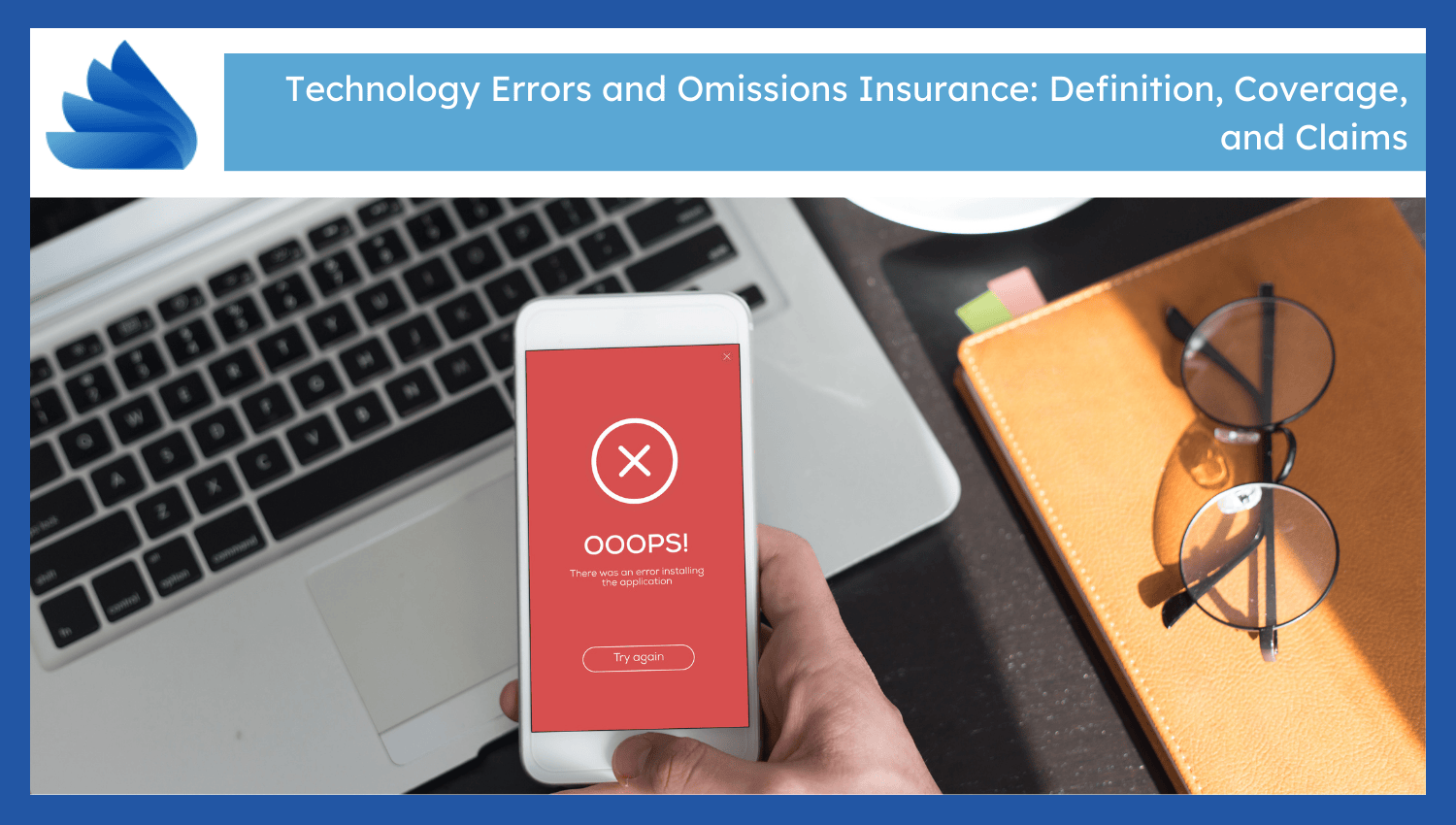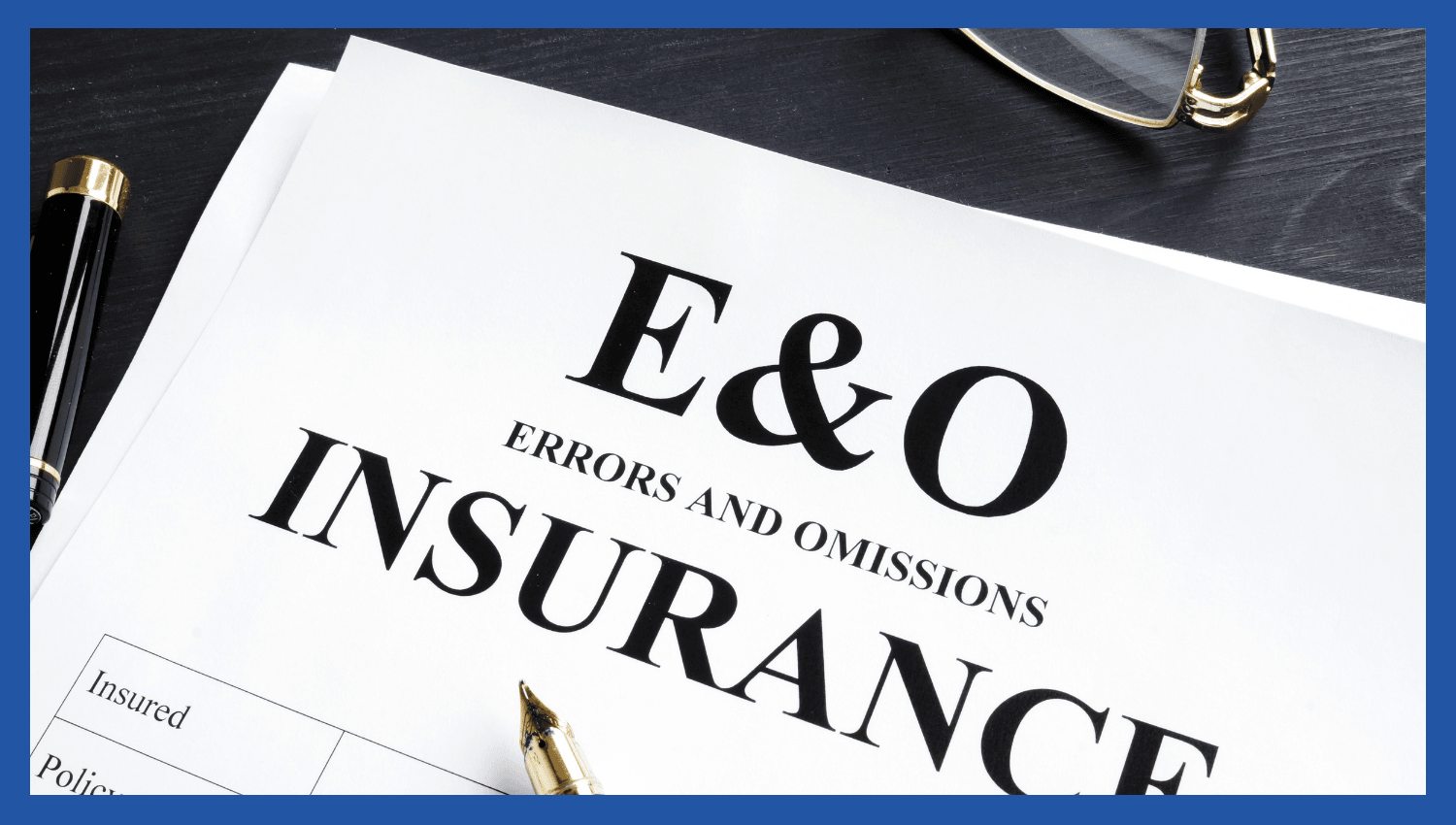
Technology Errors and Omissions Insurance: Definition, Coverage, and Claims
Technology Errors and Omissions insurance covers tech professionals in litigation by their clients in the case of service mistakes, software errors or system failure. It is used where a technological solution malfunctions or performs below expectations, resulting in a financial loss to a customer.
This insurance covers legal defense, court expenses, settlements and damages. Software developers, IT services offering providers and consultants who use technology to deliver solutions need it.
The Ponemon Institute (2023) reports that 59 percent of the claims based on data breaches involved third-party service providers, which illustrates the frequency with which customers seek recovery of errors in third-party service providers.
The Hartford says Tech E&O is not cyber insurance because it covers not only data incidents but also failure of services or products. It addresses a huge liability gap of Internet-based enterprises.
Why Do Tech Professionals and Companies Need E&O Coverage?
Here are the five reasons Tech professionals and companies need E&O coverage:- Contracts increase legal exposure: Tech experts work on a strict contract. The failure to meet deadlines or performance objectives adds to liability. When a service is not provided according to agreed terms, the clients are known to sue, especially in the regulated sectors or the high-stakes sectors.
- Minor mistakes lead to enormous losses: Systems crash with a single bug or update to the software. According to IBM (2022), IT downtime is costly to the tune of $5,600 per minute, so clients and vendors cannot afford even small errors.
- Technical mishaps lead to litigation: Litigation is often a result of security breaches, integration mishaps, or the failure of systems. According to Hiscox (2023), the number of legal claims made against software vendors and managed service providers across the globe increased drastically.
- The clients insist on contract coverages: Most of the clients also demand E&O insurance coverage before the commencement of work. This offers legal and financial security and minimizes vendor risks on high-value projects or sensitive operations.
- Reputation and cash flow protection Coverage: E&O insurance covers any legal charges, and settlements help companies to survive. It maintains a good name, guarantees solvency and helps in business sustainability following a lapse in service delivery.
What Does Tech E&O Insurance Typically Cover?
Here are six key protections included in Technology Errors and Omissions Insurance:- Services fail: Tech E&O insurance offers coverage for the delay of the deadline and malfunctioning software. It also covers lawsuits in case their services fail and lead to the incurring of financial losses.
- Negligent performance: Failure of the system results from a design fault or poor implementation. Tech E&O insures against any destruction due to work that lacks care and damages projects of clients that attract legal actions.
- Data loss: Badly integrated software or defective software destroys or erases valuable data. Tech E&O covers claims that are associated with such critical data losses.
- Cyber incidents: Tech E&O also insures against cyberattacks where there is a service contract with cybersecurity obligations. It guards against litigations associated with violations or laxity in cybersecurity actions.
- Unreliable technology advisory: Poor advice or ill-advice throws the business out of gear, causing claims. Tech E&O insures against losses encountered due to inadequate technical advice.
- Regulations of contract violation allegations: Claims also occur when tech services fail to fulfill the contractual requirements. Tech E&O insures monetary loss due to violated agreement of service and unsatisfactory deliverables.
- Legal defense, settlements, court fees, and expert witness costs: Tech E&O covers the cost of litigation defense, court costs, expert witnesses and payments of settlements, thus sparing companies of expensive costs of litigation activities associated with technology services claims.
What’s Not Covered by Technology E&O Insurance?
Here are six key protections that are not included in Technology Errors and Omissions Insurance:- Personal injury or property: The technology E&O does not involve injury or claims of property damage. General liability insurance covers all capital-based claims against bodily injuries or property damage caused by the company due to an accident or by the working process.
- Non-service failure cyberattacks: Tech E&O also excludes coverage on cyberattacks that are not bound to service errors or negligence. Data breaches, hacking, and ransomware, along with other cybercrimes not related to technology service failures, are covered through separate cyber insurance policies.
- Employee lawsuits: Claims that are related to workplace harassment, discrimination, wrongful termination or other matters that involve an employee are not covered under Technology E&O insurance policies but rather under quality employment practice liability insurance.
- Intellectual property or patent infringement: Technology E&O does not cover instances of infringement of patents or copyrights. Intellectual property insurance protects businesses in case of legal action on an ownership claim or infringement of a protected work.
- Premeditated sharp practices, or criminal acts: Technology E&O does not cover intentional misrepresentation, fraud and criminal actions by employees or businesses and, as such, is expressly not covered.
- Defects in hardware manufacture: Product liability insurance covers claims that involve defective physical products or hardware. Technology E&O does not protect losses resulting from defects or flawed material components.
Who Should Consider Technology E&O Insurance?
Here are six groups who should consider Technology Errors and Omissions Insurance:- Software developers: Software developers are at risk of bugs, crashes or even deadlines. Such mistakes result in legal suits and monetary loss in client costs due to non-delivered or late projects, particularly in high-demand settings.
- Cloud service providers and SaaS: SaaS and cloud maintainers are prone to breaches of service-level agreements and data loss. The failures usually result in lawsuits by clients based on loss of productivity during downtime or exposure of sensitive information.
- IT advisors and MSPs: IT consultants and managed service providers set up systems, update the software as well and deal with sensitive information. Errors or omissions during these activities lead to liability and loss of money.
- Cybersecurity firms: Cybersecurity companies help their consumers against hacking. Lack of prevention or improper response leads to claims associated with data loss, security negligence, and breach of contract terms.
- UX designers and web developers: Web and UX developers are responsible for downtimes, or bad performance of a website or even integration mistakes. These issues lead to loss of client revenue and negative user experience, which results in legal assertions.
- Machine learning start-ups/ AI: Automation errors are resulting in increased legal investigations of AI startups. Wrong algorithms or false predictions lead to client losses and lawsuits when more regulatory awareness is associated with AI systems.
How Is Technology E&O Insurance Different from Cyber Liability Insurance?
| Aspect | Technology E&O Insurance | Cyber Liability Insurance |
| Coverage focus | Coverage on failure to provide tech services, such as bad coding or deadline misses | Ensures hacking or ransomware or unauthorized access |
| Trigger event | insures hacking or ransomware or unauthorized access | Activates in case of a malicious attack on systems or personal data |
| Legal foundation | Activated when systems or personally identifiable information is attacked | According to a violation of privacy law or insufficient data protection |
| Claim examples | Covers lawsuits from buggy software or late project delivery | Covers costs from stolen customer data or disrupted networks |
| Client impact | Involves unmet expectations in service agreements | Involves damages from loss of confidential or regulated information |
| Typical buyers | Used by developers, SaaS firms, IT consultants, and tech advisors | Used by any firm exposed to cyber threats or handling sensitive data |
| Insurance pairing | Tech firms usually bear the two to manage internal errors and external risks | Most businesses integrate the two to control cyber vulnerability and performance risks |
How to Choose the Right Technology E&O Policy
Here are six key factors to consider when selecting a legal malpractice policy:- Select an insurance company that specializes in technology: Choose those insurers or brokers who have experience in the field of technology-related risks. Special providers are well aware of their industry-specific exposures, such as software bugs, platform breakdown, and data service interruptions.
- Check the scope of coverage: Make sure the policy includes all the fundamental services including custom software development, SaaS platforms, IT consulting, and system integration since the policy covers all of these services or not.
- Enquire on contract and SLA coverage: Ensure there is no policy exposed to legal agenda in terms of missed deadlines, breach of service level agreement or default in contractual obligations in the terms of the project.
- Subcontractor and open-source protection verification: Check that it covers third-party vendors and the use of open-source software. These factors are usually very risky in the current tech development and they must be incorporated.
- Bundled policies should be considered: Seek policy packages with cyber liability, general liability or directors and officers policies. Packages provide wider protection and it is easier to deal with policies.
- Analyse Claim handling reputation: Choose insurance providers who have good ratings in terms of quick and clean claims settlement. High-quality resolution curbs loss of time and business reputation as the firm has to meet a legal challenge.


